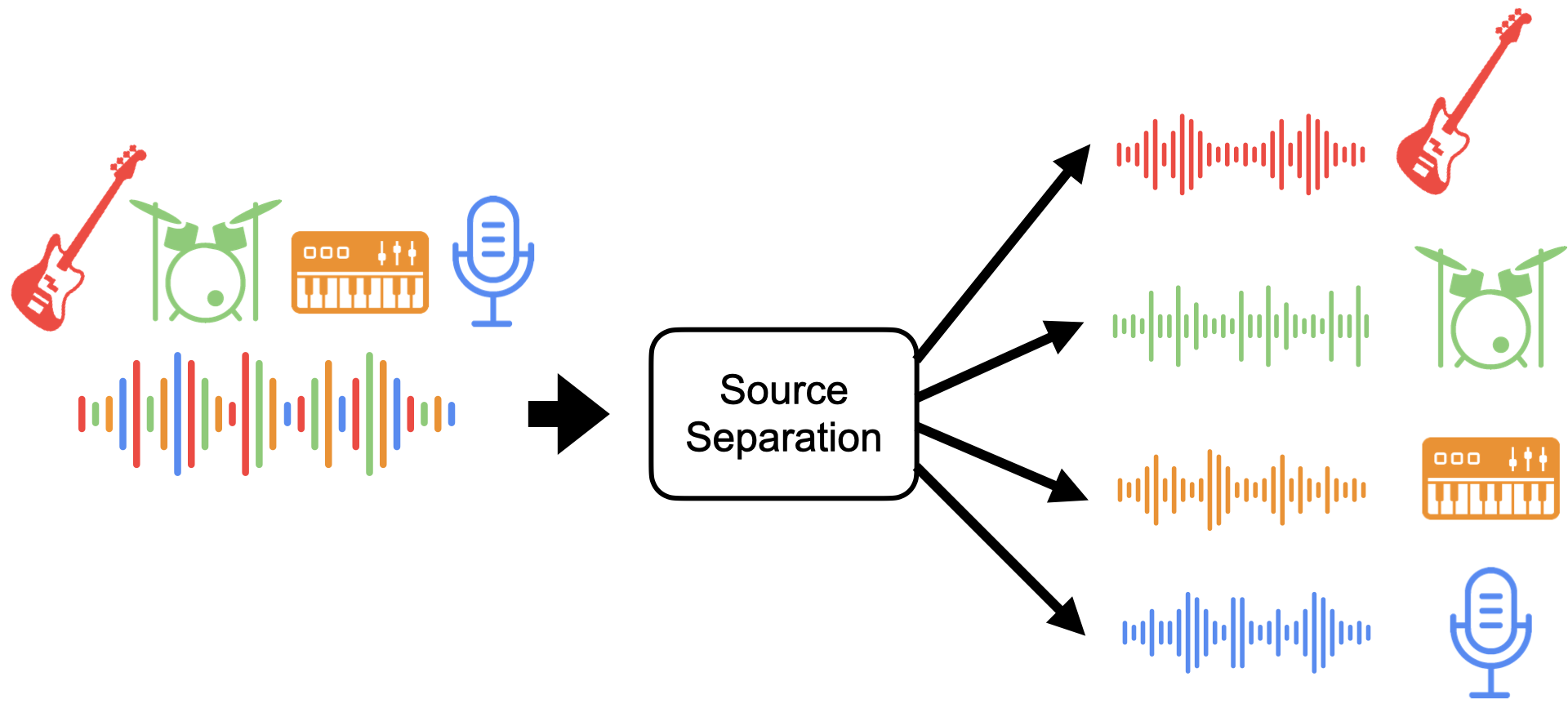Open Source Tools & Data for Music Source Separation¶
By Ethan Manilow, Prem Seetharaman, and Justin Salamon
Shared under Creative Commons BY-NC-SA 4.0.

Hello and welcome to the website for our tutorial at ISMIR 2020! We’re excited that you’ve decided to join us!
In this tutorial, we will guide you through modern, open-source tooling and datasets for running, evaluating, researching, and deploying source separation approaches. We will pay special attention to musical source separation, though we will note where certain approaches are applicable to a wider array of source types.
Desired Outcomes¶
The goal of this tutorial is that you leave with:
A practical overview of source separation, including some history and current research trends,
A high-level intuition for how and why each source separation approach works,
The ability to make an educated decision about when and how to incorporate source separation into your own work,
A set of well-tested, open-source tools that you can use if you do choose to incorporate source separation into your work, or train your own models.
After you go through this tutorial, you should be confident about using source separation in your work and you should know which tools to reach for. We hope this website will serve as a reference guide or starting point for your future endeavours with source separation technology.
Referencing this book¶
If you wish to reference this book in your own work, you can use the following
bibtex entry:
@book{opensourceseparation:book,
Author = {Ethan Manilow and Prem Seetharman and Justin Salamon},
Month = Oct.,
Publisher = {https://source-separation.github.io/tutorial},
Title = {Open Source Tools \& Data for Music Source Separation},
Year = 2020,
Url = {https://source-separation.github.io/tutorial}
}
Let’s get started!¶
Click the button on the bottom right of the page to begin going through the tutorial!